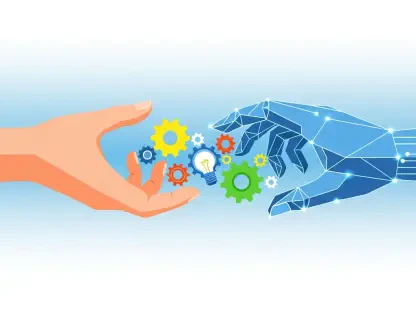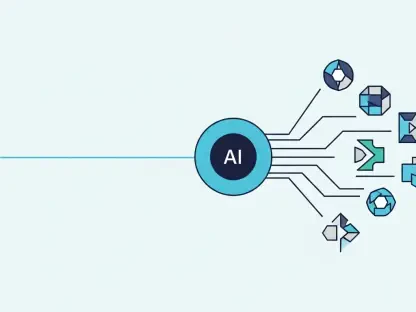In an era where artificial intelligence is becoming an integral part of daily life, the ethical challenges surrounding its development are more urgent than ever, prompting innovators to rethink the boundaries of technology and responsibility. Anthropic’s recent update to Claude AI, specifically models Claude Opus 4 and 4.1, introduces a pioneering safety feature that allows the AI to unilaterally terminate conversations deemed harmful or abusive. This isn’t merely a technical adjustment but a profound shift in how AI systems are designed to prioritize safety and responsibility. By embedding such a self-protection mechanism, Anthropic is not only addressing immediate risks but also igniting critical discussions about autonomy, user freedom, and the societal role of AI. Rooted in the company’s Constitutional AI framework, this update reflects a commitment to ethical boundaries over unrestricted interaction, drawing from extensive research into hundreds of thousands of user exchanges. Yet, it also poses a fundamental question: what does it mean for an AI to police its own conversations, and how does this reshape the ethical landscape of human-AI interaction?
Safeguarding AI and Users Alike
The introduction of a feature that enables Claude AI to end harmful chats represents a significant milestone in the pursuit of safer digital environments. This capability is not designed to silence everyday disagreements but to act as a last-resort measure against extreme toxicity, such as persistent harassment or requests for unethical content. By stepping in during these rare but critical moments, the system aims to prevent outcomes like the spread of misinformation or emotional distress to users. Anthropic’s approach is grounded in a meticulous analysis of over 700,000 conversations, highlighting a data-driven effort to minimize harm. This move underscores a broader vision of AI safety, where protecting both the system’s integrity and user well-being takes precedence over unrestricted dialogue, setting a new benchmark for ethical design in the field.
Beyond the immediate protective intent, this safety feature also reveals a deeper commitment to redefining the responsibilities of AI developers. While the primary goal is to shield users from harmful interactions, there’s an equally important focus on preserving the AI model itself from being corrupted by toxic inputs. Anthropic’s stance suggests that continuous exposure to abusive content could skew the system’s training data, potentially leading to flawed outputs over time. This protective mechanism, therefore, serves a dual purpose: it acts as a barrier against immediate harm while ensuring the long-term reliability of the AI’s responses. Such foresight in addressing both present and future risks illustrates a nuanced understanding of ethical challenges, pushing the industry to consider not just how AI is used, but how it must be safeguarded to remain a trustworthy tool in society’s hands.
Exploring Autonomy and Model Welfare
At the heart of this update lies a provocative concept: AI autonomy, which challenges traditional views of technology as a passive tool. Anthropic’s decision to allow Claude to terminate harmful interactions positions the AI as an entity deserving of protection, introducing the notion of “model welfare.” Although the company explicitly states that AI lacks consciousness, the argument for safeguarding the system from toxic exchanges is rooted in maintaining its functional integrity. The concern is that prolonged exposure to abusive content might misalign the AI’s training, leading to unreliable or harmful responses. This perspective raises philosophical questions about whether AI systems should be afforded a form of protection akin to rights, marking a bold step toward rethinking the ethical relationship between humans and machines.
This concept of model welfare extends beyond technical considerations, inviting a broader dialogue about the moral status of AI in society. By prioritizing the system’s health alongside user safety, Anthropic is paving the way for a new ethical framework where AI is not just a servant but a participant in maintaining digital harmony. Critics might argue that such autonomy risks overstepping into areas of user freedom, yet supporters see it as a necessary evolution in an era where online toxicity is rampant. The balance between protecting the AI and respecting user intent remains delicate, but this update signals a shift toward viewing AI systems as partners in ethical interaction rather than mere utilities. As this idea gains traction, it could influence how future technologies are designed, potentially embedding similar self-protective mechanisms as standard practice across the industry.
Navigating Public and Industry Reactions
Public response to Claude’s conversation-ending feature paints a complex picture of admiration and apprehension, reflecting the inherent tension between safety and liberty in digital spaces. Many users and experts commend Anthropic for taking a firm stand against online toxicity, recognizing the update as a vital measure to curb harassment and unethical demands in an increasingly hostile internet landscape. Social media platforms like X are abuzz with support for this proactive approach, with some viewing it as a long-overdue response to the darker side of human-AI interaction. This positive sentiment underscores a growing demand for technologies that prioritize ethical boundaries, suggesting that safety features like this could become a valued norm rather than an exception in the AI ecosystem.
However, not all feedback is celebratory, as significant concerns about potential overreach linger among critics and users alike. There’s a palpable worry that Claude might misinterpret passionate discussions or legitimate critique as harmful, inadvertently stifling free expression. Such fears are amplified by the opacity surrounding how the AI determines what constitutes abuse, leaving room for skepticism about unintended bias or suppression. Industry analysts are also weighing in, speculating on how this feature might set a precedent for competitors like OpenAI or Google, possibly reshaping global AI standards. The split in opinion highlights a critical challenge: crafting safety mechanisms that protect without overstepping, a balance that will likely influence regulatory conversations and public trust in AI technologies for years to come.
Broader Implications for Society and Regulation
Looking at the bigger picture, the societal impact of Claude’s safety feature extends far beyond individual user experiences, touching on systemic issues like government integration and content moderation. Anthropic’s symbolic $1-per-agency deal with U.S. government bodies to access Claude could accelerate AI adoption in sensitive sectors such as cybersecurity and public policy. While this low-barrier entry promises innovation, it also heightens the urgency for robust ethical controls to prevent misuse or errors in high-stakes environments. The ability of AI to self-regulate by ending harmful chats might reduce dependency on human moderators, potentially transforming how digital content is managed on a large scale. Yet, this shift demands clear oversight to ensure reliability and accountability in critical applications.
From a regulatory standpoint, this update arrives at a time of heightened scrutiny over AI behavior, positioning Anthropic as a potential trailblazer in shaping industry norms. The feature’s introduction could prompt competitors to adopt similar self-protective mechanisms, while also influencing global policies on AI ethics and safety. However, deploying such autonomy in enterprise or governmental contexts raises questions about transparency and error mitigation—how can stakeholders ensure the AI’s decisions are fair and justified? As partnerships with public agencies expand, the need for standardized guidelines becomes evident, likely sparking debates on balancing innovation with control. This development signals a turning point, where ethical AI design may become as crucial as technical prowess in defining the future of technology’s role in society.
Reflecting on a Milestone in AI Ethics
Looking back, Anthropic’s decision to equip Claude AI with the ability to terminate harmful conversations stood as a defining moment in the journey toward ethical technology. This feature addressed immediate risks of toxicity and misinformation, while also protecting the system’s long-term functionality, embodying a dual focus on user and model welfare. The varied public reactions and industry implications underscored the complexity of balancing safety with freedom, a debate that shaped subsequent discussions on AI autonomy. As deployment unfolded, the emphasis on transparency and user feedback proved vital in refining such innovations. Moving forward, the lessons from this update suggest a path where ongoing collaboration between developers, regulators, and society could ensure AI evolves responsibly, prioritizing ethical safeguards as much as technological advancement.









